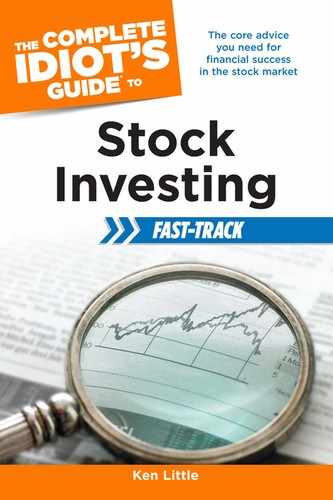How to Build a Portfolio That Fits You
Building a portfolio that fits you starts with an understanding of the relative risk associated with the possible combinations of asset classes. Using this understanding, you can fit the pieces together to build a portfolio that addresses your financial goals and is within your tolerance for risk. You should never buy a stock(s) or put together a portfolio that keeps you awake at night because it is too risky. Each asset class, with the exception of cash, has its own risk concerns. If you keep your cash in one of the places previously mentioned, you should not have to worry about its safety.
Fixed-Income (Bonds) Asset Class
To take advantage of the tendency of bonds to move in the opposite direction of stocks, you should use bonds for this asset class. Bonds come in a variety of risk profiles, maturities, and returns. Treasuries are the safest, followed by well-rated municipal bonds and corporate bonds. Except for Treasuries and all other bonds, there is not a sharp line between risk of corporate and municipal bonds. A highly rated corporate bond will be less risky (and still may pay more) than a poorly rated municipal.
The longer the maturity of all bonds, the higher interest rate it must offer, because more time means more chances for events to negatively impact bonds. The higher the risk (lower ratings), the more interest bonds must pay to compensate buyers for the risk. An aggressive bond would be a mid- to low-rated corporate bond, while a conservative bond would be a Treasury or highly rated municipal bond. Bonds are referenced in the portfolios that follow, but only to show how they fit into the asset allocation.
As a broad rule, stocks are more risky than bonds. As with most generalities, it is easy to poke holes in a flat statement. Top-quality companies (core stocks) are less risky than very poorly rated corporate bonds. However, within the continuum that includes all stocks, there are some that are more risky than others. Growth stocks tend to be more risky than core stocks. Value stocks may or may not be more risky than growth stocks.
The size of the company matters a great deal when assessing the risk of the stock. Small company stocks are more risky than large company stocks. Stocks in certain industrial sectors may be more risky than stocks in other sectors. Tech stocks are often more risky than other industrial sectors because technology can change quickly—today’s leader can be tomorrow’s also-ran. However, economic circumstances can move almost any industrial sector into the risky column. For example, during the housing collapse that began in 2007, homebuilders took a devastating blow as did major appliance makers and so on.
When you put company size and industrial sector together, you get pieces of the allocation puzzle that fit in specific slots. For example, small tech companies are generally considered risky, even when the sector is doing well, so they may have a place in an aggressive portfolio. Very large, well-diversified companies (core stocks) work in almost every portfolio to some extent (more so in conservative allocations; less so in aggressive ones).
| STOCK TIP |
In addition to considering size and type of stock (core, growth, value), you need to be certain that stocks you add to your holdings are diversified. Diversification ensures the same economic forces do not affect your stocks. For example, high interest rates hurt makers of big-ticket items such as cars and housing. On the other hand, utilities and consumer staples (think toilet paper) do not drop as far as other stocks during an economic downturn—they also do not rise as fast or as far when the economy is booming. These stocks are called noncyclical or defensive because they help smooth out the peaks and valleys of the market.
